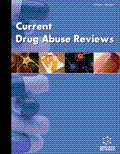Abstract
Carisoprodol (N-isopropyl-2 methyl-2-propyl-1,3-propanediol dicarbamate; N-isopropylmeprobamate) is a centrally acting skeletal muscle relaxant whose primary active metabolite is meprobamate, a substance with well established abuse potential similar to that of benzodiazepines. A number of reports show that carisoprodol has been abused for its sedative and relaxant effects, to augment or alter the effects of other drugs, and by the intentional combination of carisoprodol and other noncontrolled medications because of the relative ease (as compared to controlled substances) of obtaining prescriptions. The diversion and abuse of carisoprodol and its adverse health effects appear to have dramatically increased over the last several years. Clinicians have begun to see a withdrawal syndrome consisting of insomnia, vomiting, tremors, muscle twitching, anxiety, and ataxia in patients who abruptly cease intake of large doses of carisoprodol. Hallucinations and delusions may also occur. The withdrawal symptoms are very similar to those previously described for meprobamate withdrawal, suggesting that what may actually be occurring is withdrawal from meprobamate accumulated as a result of intake of excessive amounts of carisoprodol. However carisoprodol itself is capable of modulating GABAA function, and this may contribute both to the drugs abuse potential and to the occurrence of a withdrawal syndrome with abrupt cessation of intake. Carisoprodol has been classified as a controlled substance in several states in the US and restrictions on the use of the drug have been imposed in some European countries. Carisoprodol is metabolized to a controlled substance, has clear evidence of abuse potential and increasing incidence of abuse, and has shown evidence of a withdrawal syndrome with abrupt cessation from intake. This article will discuss the abuse potential of carisoprodol and the associated withdrawal syndrome, and consider implications for future use of the drug.
 60
60















